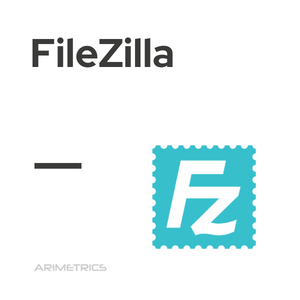Definition:
FileZilla is a free and open-source File Transfer Protocol (FTP) application. It is cross-platform, meaning it can be installed on Microsoft Windows, Mac OS, and Linux operating systems. It is mostly used to quickly upload and download files from a remote server over the Internet. It offers a wide range of functions, such as a graphical user interface (GUI) to facilitate file management and automation, the ability to synchronize local and remote directories, FTP over TLS/SSL (FTPS), transfer scheduling, etc. It also supports IPv6 connections. FileZilla is written in C++ and released under the GNU GPL.
How to install FileZilla Client
FileZilla is easy to install. It can be downloaded for free from their website and does not require any special hardware or software. To install FileZilla Client on a Windows computer, first download the FileZilla installation package from the official website. Then, double-click the FileZilla file to start the installation wizard. Follow the on-screen instructions to complete the installation process. A FileZilla icon appears on the desktop. To install it from a Mac system, download and double-click the FileZilla dmg file. Drag and drop the icon into the Applications folder, and then drag and drop. FileZilla will be available on your Mac.
It is a useful and powerful tool for managing remote files, and it can help make file transfers easier and faster. It’s easy to download and install, so it’s easy to get started right away. It offers a number of features that make it an effective File Transfer Protocol client. Ws is free, open source and available for Windows, Mac and Linux operating systems.
How to use FileZilla
Once installed, FileZilla is very easy to use. It allows users to drag and drop files between their local computer and the remote server. It also supports Secure File Transfer Protocol (SFTP) connections, which can be used to transfer data more securely over the Internet. The user interface consists of two parallel File Explorer windows, one for the local computer and one for the remote server. File transfers can be initiated by simply dragging files from one File Explorer window to the other. It also supports a number of features that make file management via FTP easier , such as file synchronization, transfer scheduling, and file management automation.
Where to upload website files
Where you should upload your web files depends on the type of hosting service you use. If you are using a shared hosting service, you will typically be provided with File Transfer Protocol (FTP) access to upload files to the server. FileZilla is an FTP client that can be used to easily and securely transfer files between your local server and your FTP server.
For other types of hosting, such as cloud or dedicated hosting, you may need to use other tools such as File Manager or cPanel File Manager to upload your web files. Regardless of the type of hosting service you use, it’s important to make sure your web files are uploaded and stored correctly.
Many FTP clients can also be used to access various file storage services such as Dropbox, Google Drive or OneDrive . It supports a number of cloud storage services, and may be the best option for securely uploading files to these types of services. It is a powerful, easy-to-use File Transfer Protocol client that can help make file transfers faster and easier. FileZilla is free, open source , and available for Windows, Mac, and Linux operating systems. FileZilla is the perfect choice for anyone looking to manage their web files more efficiently.
